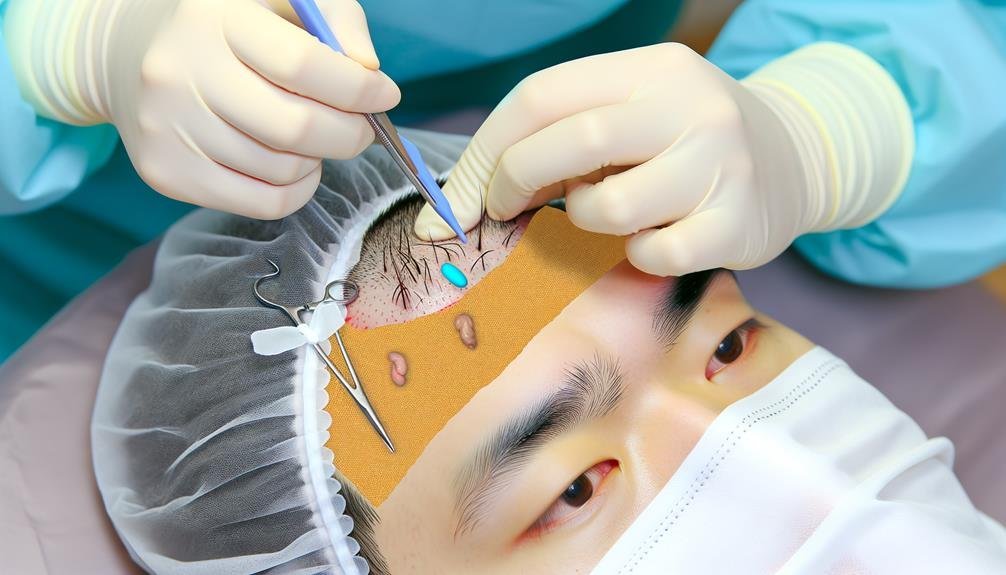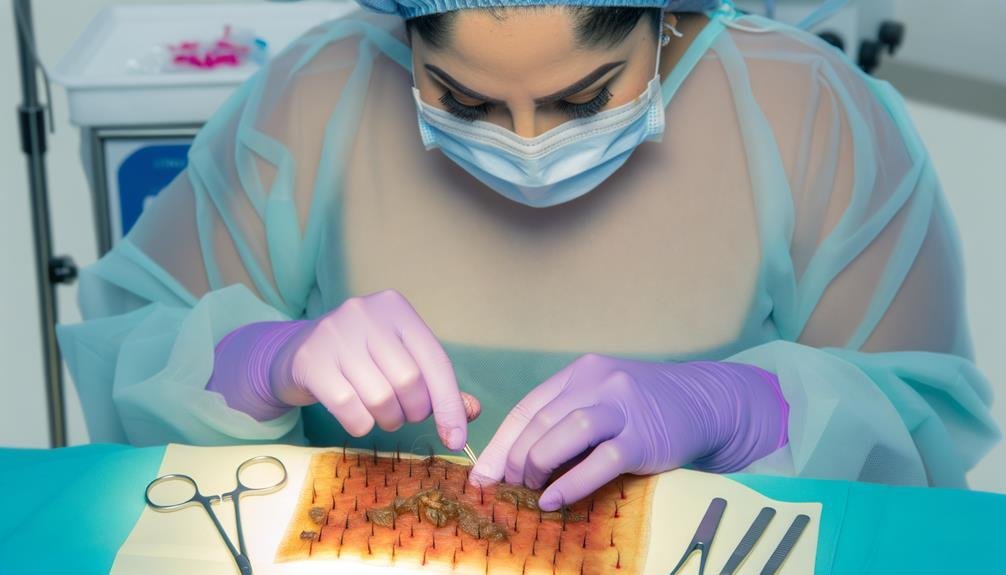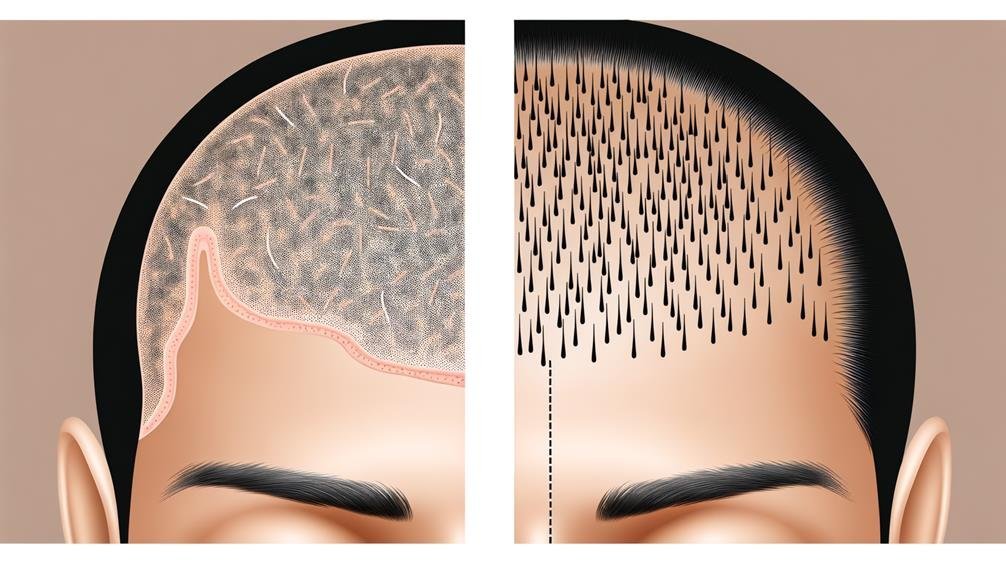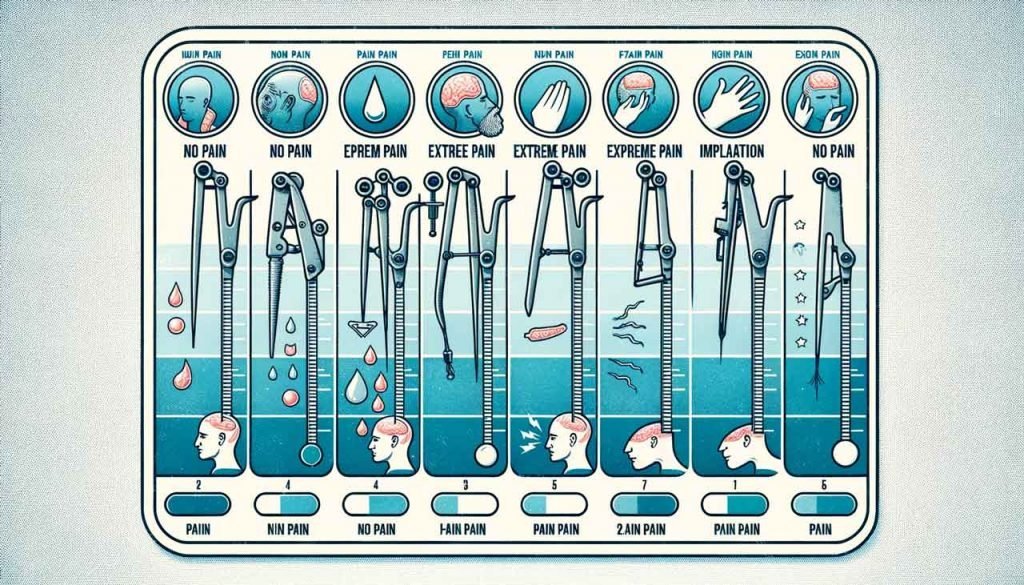What Is a FUT (Strip) Hair Transplant?
Follicular Unit Transplantation (FUT), or Strip Hair Transplantation, stands as a cornerstone in surgical hair restoration, offering a considerable solution for those grappling with hair loss. This method is characterized by removing a donor strip from the occipital scalp—an area genetically resistant to balding—followed by isolating individual follicular units through stereo-microscopic dissection. These units are then meticulously transplanted to the thinning or bald regions, promoting a natural-looking hairline and density. The procedure's technical demands require a high level of expertise, as it must balance maximal follicular yield with minimal scarring. Though FUT has been eclipsed by newer techniques in some practices, its ability to yield many grafts in a single session remains a compelling consideration. As we examine the intricacies and outcomes of this method, one must contemplate the implications of such a procedure on the patient's quality of life and long-term satisfaction with their appearance.
Frequently Asked Questions
What Is the FUT Strip Procedure?
The FUT strip procedure is a surgical technique for hair restoration where a strip of scalp is removed to harvest hair follicles, which are then implanted into areas experiencing hair loss.
How Many Grafts Are in a FUT Strip?
The number of grafts within a FUT strip varies, typically ranging from 2000 to 4000, and is determined by the individual's hair density and the dimensions of the harvested donor skin strip.
What Is the Difference Between Strip Hair Transplant and Fue?
The primary distinction between strip hair transplants and FUE lies in extraction: FUT removes a skin strip, while FUE harvests individual follicles, impacting scarring, recovery, and suitability for different hair lengths and styles.
How Much Does a FUT Graft Cost?
The cost of a FUT graft typically varies, influenced by factors such as the surgeon's expertise, geographic location, and the extent of transplantation required, with prices ranging broadly from $4,000 to $10,000.
Table of Contents
Understanding FUT Transplants

Follicular Unit Transplantation (FUT), or Follicular Unit Strip Surgery (FUSS), is a hair restoration procedure that meticulously removes a strip of scalp with healthy hair follicles and transplants them to areas experiencing hair loss. In this technique, a surgeon excises a narrow strip of scalp from the designated donor area, typically at the back of the head, which is genetically resistant to balding. The extracted strip is then dissected into individual follicular unit grafts. These grafts are meticulously implanted into the recipient sites, fostering a sense of restored fullness and belonging for the individual. The procedure, lasting between 4 to 8 hours, results in a linear scar at the donor site, but when performed by skilled hands, the visibility of the scar can be minimized. FUT is a viable option for those with sufficient donor hair, offering a long-term solution to hair loss.
Evaluating Donor Areas
Selecting an optimal donor site is a critical step in the FUT hair transplant process, as it ensures the availability of robust, quality hair follicles for transplantation. The ideal donor site is typically found at the back or sides of the scalp, where hair-bearing tissue exhibits resistance to balding. In evaluating these areas, specialists look for density, hair caliber, and scalp laxity. This assessment determines the quantity and quality of the follicular units that can be harvested through the strip of skin method. Unlike follicular unit extraction, FUT requires a continuous strip, making selecting a sufficient and viable donor site paramount to the procedure's success. A meticulously chosen donor site fosters a sense of belonging by promising a more natural and fuller hair outcome.
Procedure and Techniques

The FUT hair transplant procedure commences with the careful excision of a donor strip from the patient's scalp under local anesthesia, ensuring minimal discomfort while harvesting a substantial number of follicular units for transplantation. This technique, known as follicular unit transplantation (FUT), involves several meticulous steps:
- A narrow strip of hair-bearing tissue is surgically removed from the donor area, typically the back of the scalp; this area is chosen for its resistance to balding.
- The removed scalp is then carefully dissected under a microscope to isolate individual follicular units without damaging them.
- These units are then strategically implanted into the recipient sites, mimicking natural hair growth patterns for seamless integration.
Potential Side Effects
While a FUT hair transplant can significantly improve hair coverage, patients should be aware of the potential side effects, including the possibility of a permanent scar at the donor site. Follicular unit transplantation demands precision and care to ensure a high survival rate of the transplanted hair. However, like any hair restoration surgery, there are inherent risks.
| Side Effect | Description |
|---|---|
| Scar Formation | A linear scar in the donor area is inevitable but is typically concealable under hair. |
| Shock Loss | Temporary thinning of pre-existing hair due to surgical trauma may occur. |
| Growth Issues | Some patients may experience slow or patchy growth, necessitating further intervention. |
Informed candidates understand that these side effects are part of the journey towards achieving a fuller head of hair through strip hair transplant techniques.
Comparing FUT and FUE

When comparing Follicular Unit Transplantation (FUT) with Follicular Unit Extraction (FUE), it is crucial to recognize the distinct surgical approaches and their respective implications for patients seeking hair restoration solutions. Here are the key differences:
- Method of Harvesting: FUT involves excising a strip from the donor area, leaving a linear scar, while FUE entails individual follicle extraction, creating multiple small, round scars.
- Suitability: FUT is recommended for those with significant hair loss and ample donor supply; FUE is preferable for patients with short hairstyles or finer hair.
- Cost Consideration: FUT generally costs between $4,000 to $10,000, whereas FUE may incur higher expenses due to its labor-intensive nature.
Both hair transplantation techniques aim to restore hair in the recipient area, offering a sense of belonging and renewed confidence.
References:
Follicular unit transplantation



